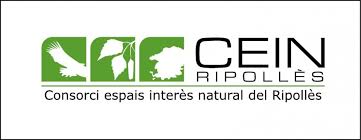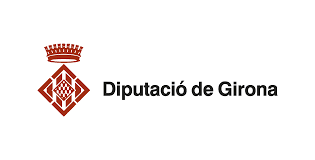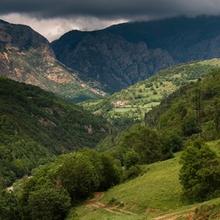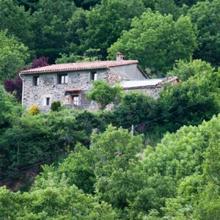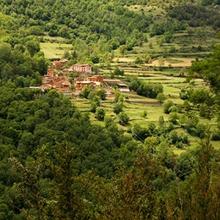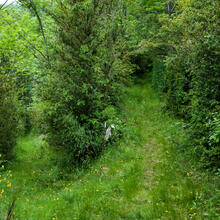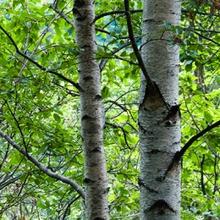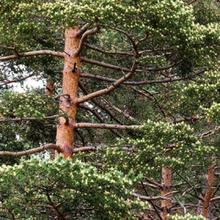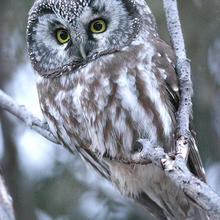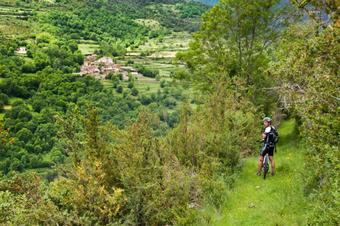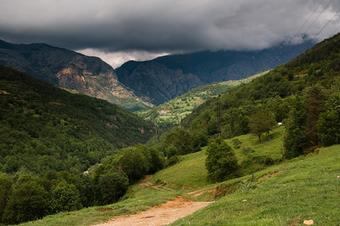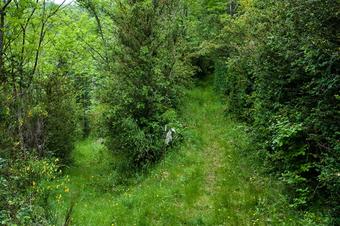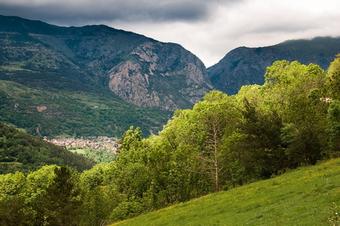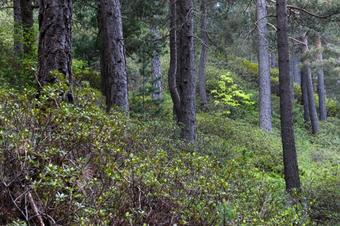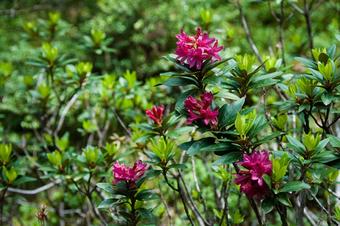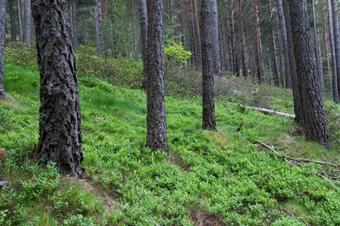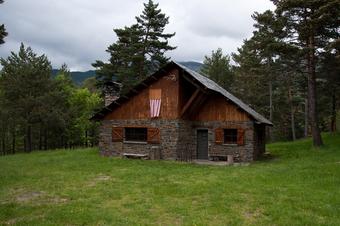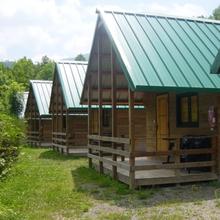Introduction
| This route enters the southern area of the Natural Park of Les Capçaleres del Ter and Freser. This is where we find the refuge of the Pla d'Erola. |
| It is a straight trail whith an ongoing ascent till the way back. It passes between beech forests with views to the villages of the Ribes Valley. We'll see a change from deciduous vegetation first to coniferous forests afterwards. |
We recommend the Local Natura App to do this route. Download it for free here:
Apple store Google Play
-
TypologyLinear
-
DifficultyMedian
-
Duration2 hours
-
Slope630.00 meters
-
Distance5.10 km
-
ThemeFlora and faunaLandscaping
-
ActivityBy foot
-
Rating
Slope graph

Description
| We leave the Castle of St. Pere (11th century) taking the direction of the Pla d'Erola refuge. When gaining a bit of height, we will have spectacular views of the upper part of the Ribes Valley, between orchards, pastures and meadows. On our way back, the Taga and towards the east, the village of Pardines. |
| The path, which is narrow and flanked by booms, makes it possible sometimes to glimpse the villages of the valley. Batet, on the other side of Freser, is the first to appear, surrounded by deciduous trees. Ash trees, hazelnuts, oaks and, to a lower degree, cherry trees, aspens and sallow trees. The boom and other bushes such as the elder and roses occupy the lower levels of the fields. |
| On our way up, the deciduous meadows and forest make us enter a more homogeneous conifer forests. The forest of the town belongs to the municipality of Ribes de Freser. It is a red pine forest mixed with black pine, more typical of the higher dwelling. The undergrowth shrubs have been replaced by neret or blueberry carpets. The rhododendron, woody cushion, which blooms spectacularly in summer, is abundant in red pine forests. They also accompany the cranberry, more abundant, but when it is the black pine that dominates. Blueberries, which have edible fruits, rich in vitamin C and medicinal properties in the green parts. They are used a lot in the Nordic countries to make jams and, in our country, they are part of the rooster's diet and that of other animals. |
| Throughout the route, in the most forested areas, there is a small ungulated herbivore: the roe deer. In the high parts of alpine and rocky meadows, the chamois, also a small herbivore, finds himself more comfortable. |
| The black woodpecker and the Pyrenean owl are representative birds of these pine forests, although they are very difficult to see. The black woodpecker and the other woodpeckers can be detected by their sing or by stinging strains in spring. |
|
The refuge of the Pla d'Erola is in a pleasant village, near a wonderful viewpoint to the summits that surround this Freser headboard. Below, the villages of El Serrat and Queralbs sprinkle the bundles of meadows. To the north and from left to right, if the weather allows us, you can see the Puigmal (2910m), the Finestrelles (2829m), and the Pic de l'Aliga's lodge, the Torreneules Gran (2726m) and Petit and, closer to us, the most to the right, the Balandrau (2584m).
|
Tips
Path |
| The ascending path is constant from the beginning. Take it easy. |
| If you want to do it with your BTT, it is best to go to the refuge and return through the forest track. Remember that the use of the paths can favor erosion processes. |
| When going back, when you arrive at Can Nadal, you can take the tour to Ribes Altes, if you do not want to go down along the same place. You can follow the track bounded to the east, and go down to Ribes de Freser with the next turn to the right. |
| Take care with time. The proposal is linear, therefore, you must add the return time (45 min - 1 h). If you return through Ribes Altes, 30 more minutes. |
Water |
| Your will find a fountain at Erola's refuge. |
Weather |
| In the mountains, weather can change quickly. Make sure you're on the lookout and take suitable clothes just in case. At the top of the refuge we are at 1,500m. The atmosphere is cool and cold at night. |
Land |
| The land of the track is not complicated, but wear suitable and resistant footwear. In the paths it is easy to slip or to suffer foot twists. |
Equipment |
| Binoculars to see birds or animals in distant meadows. |
| Trail sticks will help you walk and find balance. |
| Keep in mind the time of the year in which you take the route and, depending on this, choose the most suitable clothing. Never go too strict on clothing. |




